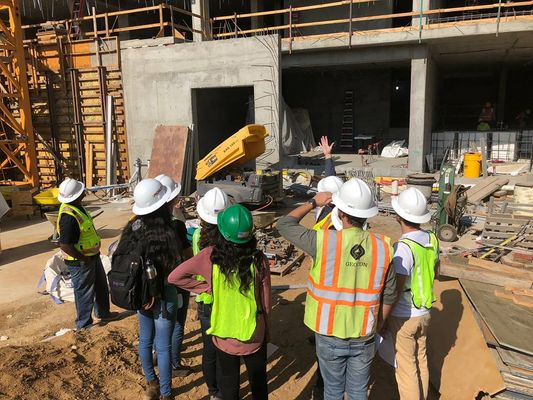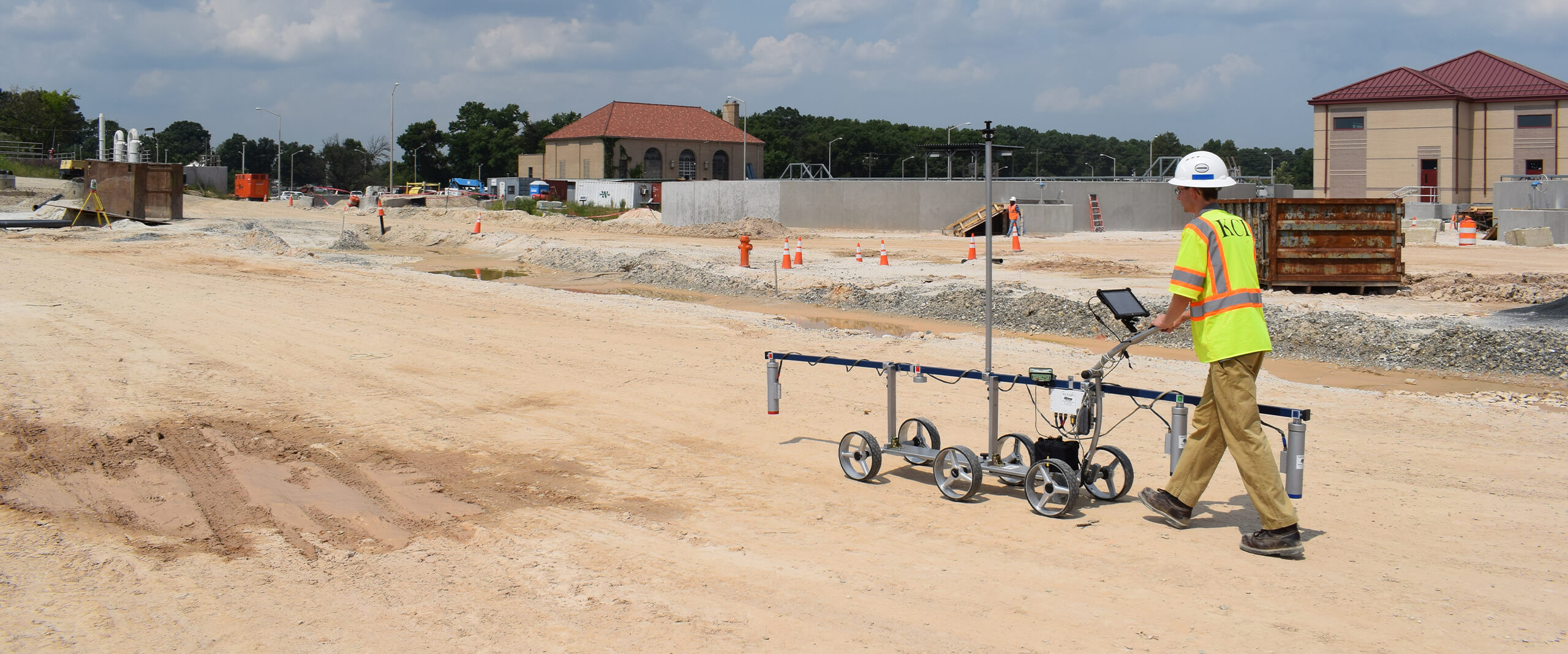Browsing the Intricacies of Geotechnical Eng Projects
Wiki Article
A Comprehensive Summary of the Key Obligations of Geotechnical Engineers in Site Characterization and Ground Improvement Strategies for Engineering Solutions
Geotechnical engineers are indispensable to the effective execution of engineering tasks, entrusted with the essential duties of website characterization and the application of ground improvement strategies. Their work entails a complete evaluation of subsurface conditions, utilizing different testing approaches to recognize soil and rock properties. This foundational understanding not only notifies style choices yet likewise minimizes possible dangers connected with ground instability. As we explore the diverse functions of these experts, it comes to be evident exactly how their knowledge forms the safety and security and efficiency of design solutions. What particular techniques and assessments attract attention in this important discipline?Duty of Geotechnical Engineers
Geotechnical engineers play a critical duty in the design and building of framework by examining the actions of soil and rock underneath the surface area - geo tech engineering. Their obligations incorporate assessing subsurface conditions to educate style choices that guarantee structural stability and security. By conducting in-depth analyses of dirt buildings, consisting of shear toughness, compressibility, and leaks in the structure, geotechnical designers give important information that affects the option of proper construction materials and strategiesIn addition to assessing dirt technicians, geotechnical engineers are entrusted with identifying possible hazards such as landslides, sinkholes, and ground settlements. Their experience aids alleviate dangers connected with these geotechnical sensations, consequently securing both the atmosphere and public safety and security. They additionally collaborate very closely with various other design disciplines, ensuring that geotechnical considerations are integrated right into general job design.
Furthermore, geotechnical engineers participate in the evaluation of existing frameworks, giving referrals for retrofitting and repairs when required. Their extensive understanding of soil-structure interaction is necessary for the growth of lasting infrastructure remedies. In general, the duty of geotechnical engineers is indispensable to the effective understanding of construction projects, guaranteeing they are safe, resilient, and compliant with regulative criteria.

Website Characterization Procedures
Effective website characterization procedures are important for comprehending the subsurface problems that influence task design and implementation. Geotechnical engineers utilize a methodical method to gather, assess, and translate data regarding rock, groundwater, and dirt characteristics. This procedure begins with a detailed review of existing literature and archaeological site information, supplying insights into previous website conditions and possible obstacles.
Information analysis adheres to fieldwork, where engineers use geostatistical techniques to interpret findings and create geological designs. This modeling aids in identifying prospective geohazards, such as landslides or liquefaction, which are crucial for risk evaluation. Subsequently, the results inform design suggestions, making certain that engineering options are both risk-free and reliable. Via persistent site characterization, geotechnical engineers lay the groundwork for successful job execution, optimizing and lessening unanticipated difficulties resource allocation.
Dirt and Rock Testing Approaches
While recognizing subsurface problems is important, the choice of suitable soil and rock screening approaches is similarly crucial for accurate evaluation and style. Geotechnical designers employ a selection of testing strategies to assess the mechanical and physical residential or commercial properties of soil and rock materials.Research laboratory examinations, such as Atterberg limits, grain dimension analysis, and unconfined compressive strength examinations, offer essential information on soil actions under various dampness problems and filling circumstances. These examinations aid establish dirt category and forecast negotiation or shear stamina features essential for structure layout.
In-situ screening techniques, consisting of Requirement Penetration Tests (SPT), Cone Penetration Examinations (CPT), and stress meter examinations, allow engineers to gather data directly from the ground. These techniques use beneficial understandings right into the soil's thickness, uniformity, and stratification without the demand for comprehensive tasting.
Rock testing generally includes core tasting and laboratory analysis to assess homes like uniaxial compressive stamina and rock top quality classification (RQD) With each other, these soil and rock screening approaches allow geotechnical engineers to make enlightened decisions concerning site-specific difficulties, guaranteeing the safety and stability of design services.
Ground Enhancement Techniques
Ground renovation strategies are necessary for enhancing the design residential or commercial properties of soil, thus raising its load-bearing capability and decreasing negotiation. These methods are vital in dealing with obstacles presented by problematic or weak dirts, which can significantly impact the stability and toughness of structures.Different ground renovation techniques are utilized, consisting of compaction, grouting, and soil stabilization. Compaction entails boosting the thickness find more of soil with mechanical methods, which improves its shear stamina and lowers compressibility. Grouting, on the other hand, involves infusing a liquid material right into the ground to load spaces and boost soil communication. This method is especially effective for dealing with loosened sands or broken rock.
Dirt stabilization includes an array of techniques, from chemical ingredients to mechanical therapies, focused on boosting the soil's resistance to erosion and deformation. Strategies such as lime stablizing or concrete blending alter the residential properties of the dirt at a fragment degree, boosting its total performance.
Value of Geotechnical Analyses
Geotechnical assessments play a crucial role in the preparation and style of engineering tasks, as they give crucial details regarding the subsurface conditions. Understanding soil buildings, rock developments, groundwater degrees, and prospective geohazards is crucial for making certain the security and safety of frameworks. These analyses enable designers to make educated decisions pertaining to website selection, style parameters, and building and construction methodologies.
The value of geotechnical assessments extends past first job phases; they contribute in risk management and price performance. By recognizing possible problems early, such as dirt settlement, incline instability, other or too much groundwater, engineers can create appropriate mitigation methods, lowering the possibility of expensive delays and architectural failings. Furthermore, these assessments sustain conformity with regulative demands and enhance the sustainability of engineering methods.

Conclusion
Finally, geotechnical designers are crucial to making certain the safety and security of engineering jobs with comprehensive site characterization and ground renovation techniques. geotechnical eng. Their methodical method to analyzing subsurface problems, combined with their referrals for effective ground alteration, considerably boosts dirt residential or commercial properties and load-bearing ability. The knowledge of geotechnical designers not only helps with educated project preparation yet also makes certain compliance with policies and cultivates effective communication among stakeholders, eventually adding to effective engineering resultsGeotechnical engineers play a crucial role in the style and construction of facilities by analyzing the behavior of soil and rock underneath the surface area. By conducting in-depth analyses of soil buildings, including shear compressibility, leaks in the structure, and strength, geotechnical engineers give important information that influences the selection of ideal building products and techniques.
In addition to analyzing soil mechanics, geotechnical find engineers are charged with determining potential risks such as landslides, sinkholes, and ground negotiations. Geotechnical engineers use a methodical technique to gather, assess, and translate information regarding soil, groundwater, and rock characteristics. By determining prospective issues early, such as soil negotiation, slope instability, or excessive groundwater, engineers can design ideal reduction approaches, lowering the likelihood of architectural failures and expensive hold-ups.
Report this wiki page